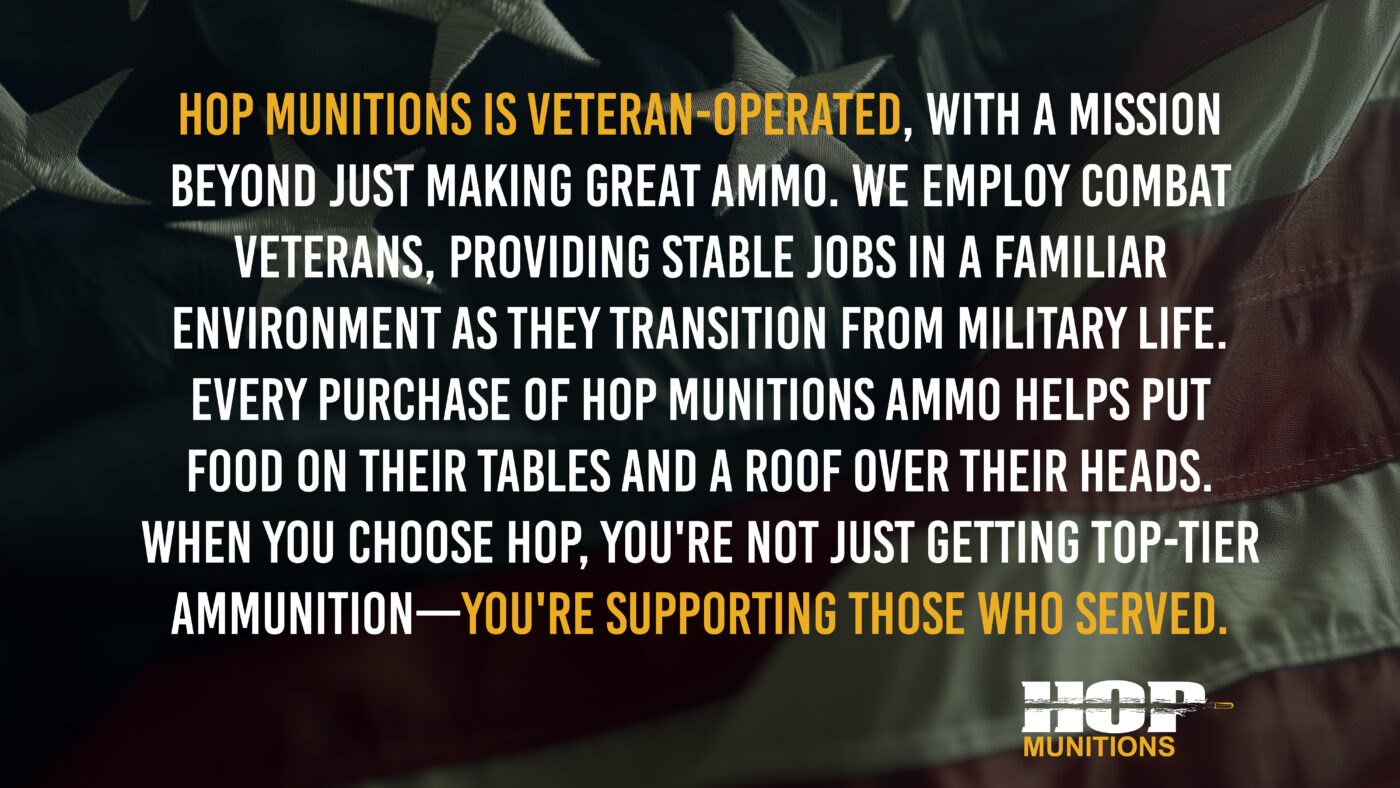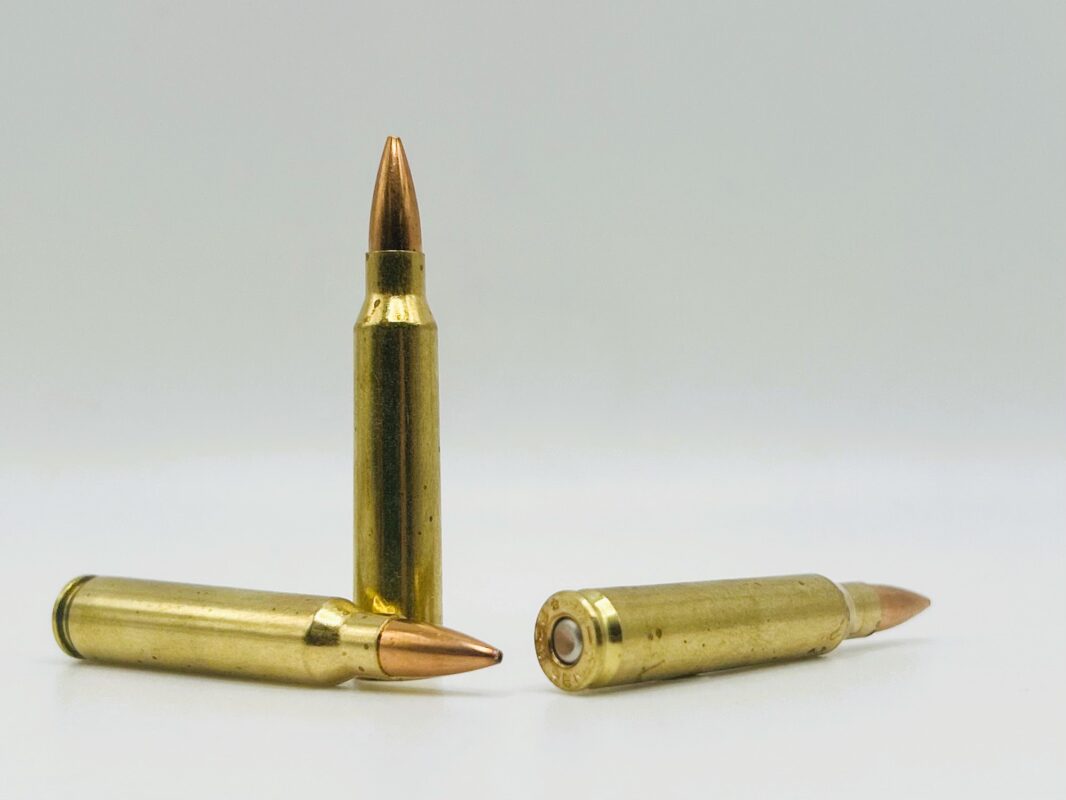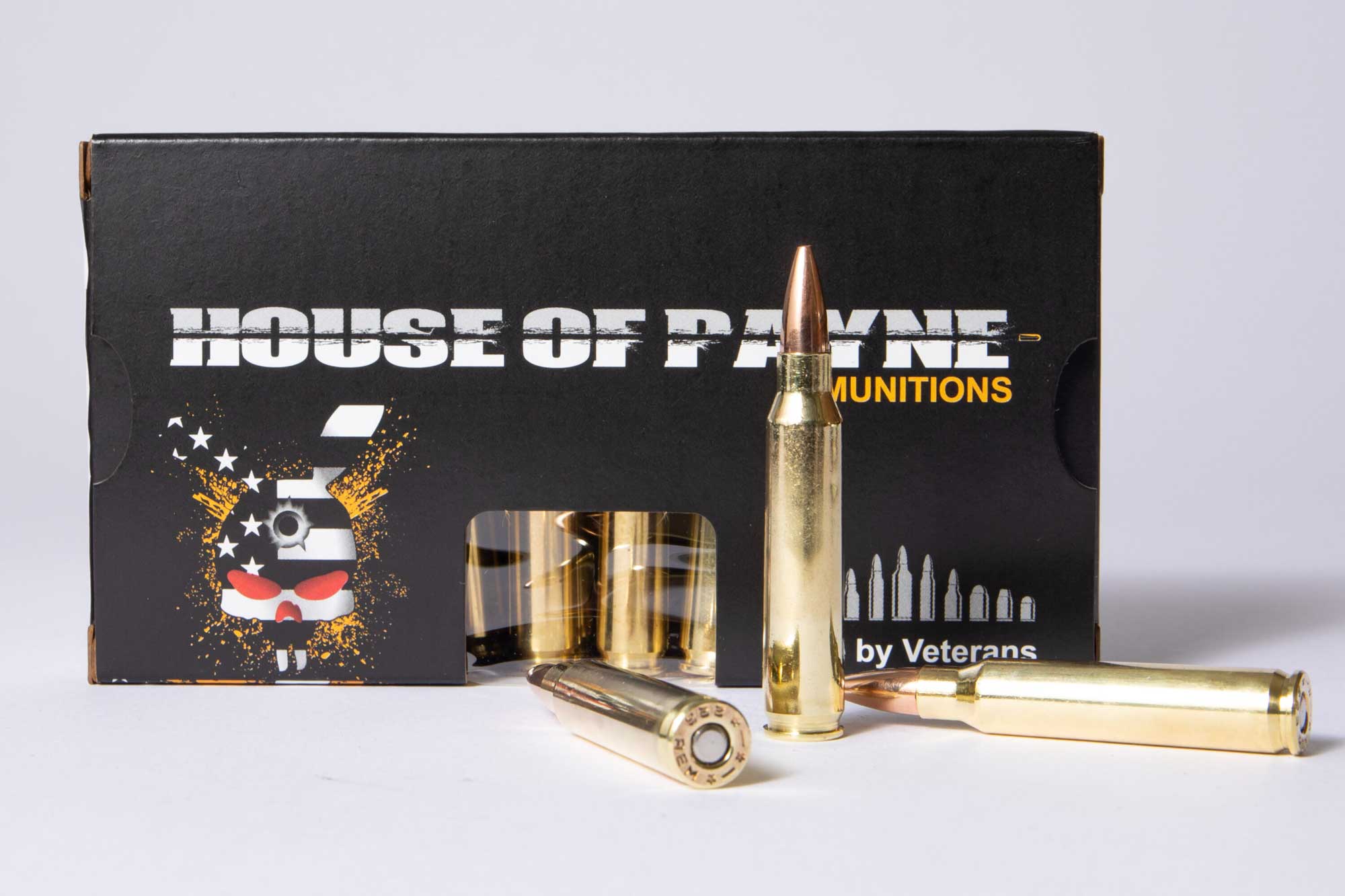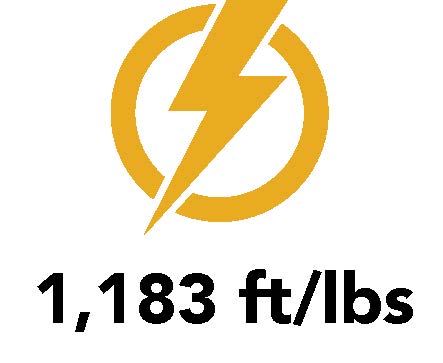HOP Blog
5.56 vs .223 | Whats The Difference | Ballistics
What is the key difference between 223 and 556?
The main difference between these two cartridges is the pressure at which they are loaded.
The 5.56 NATO cartridge is loaded to a higher pressure of 58,000 psi, whereas a .223 round is loaded to 55,000 psi.
Likewise, the heavier 62-grain M855 NATO round is roughly 13% more powerful than the 223 Remington round, resulting in a pressure of roughly 62,366 psi.
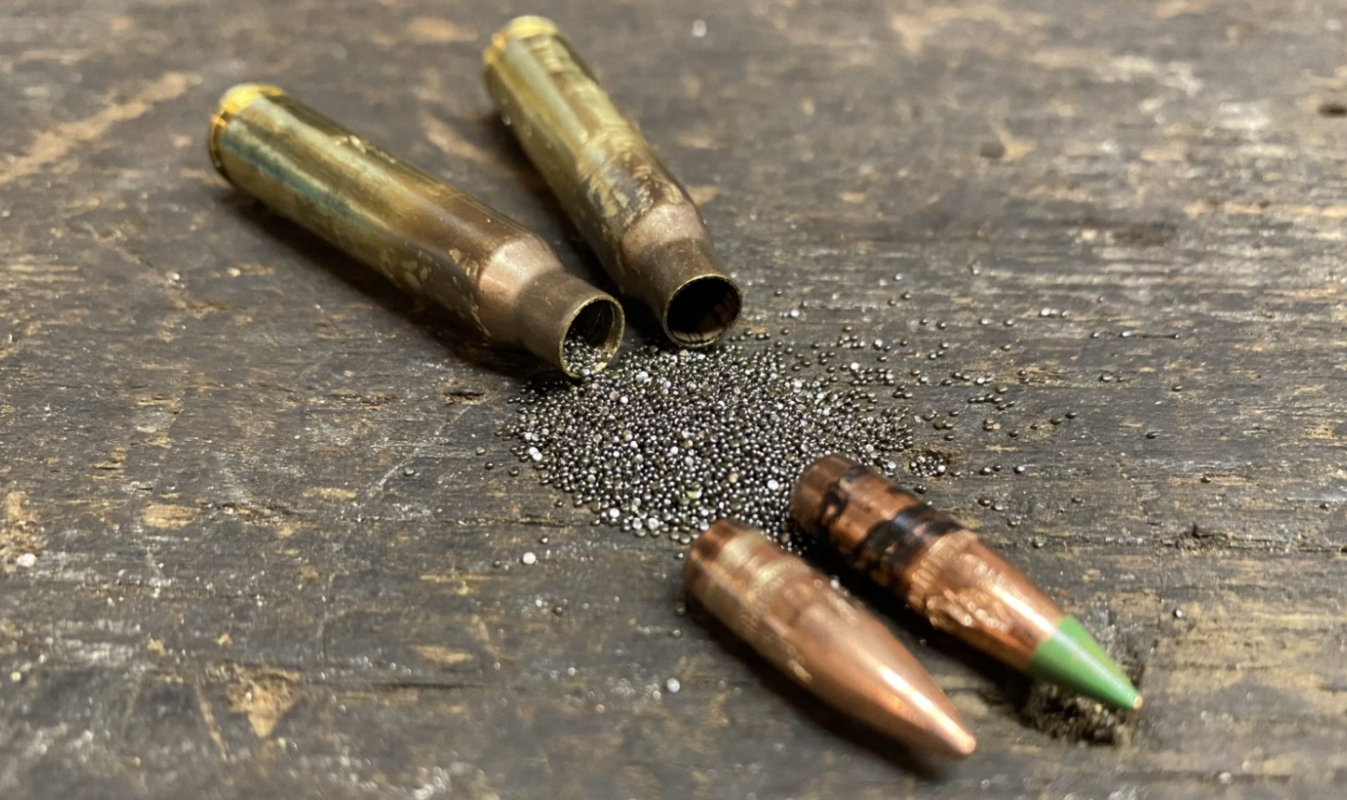
You can imagine what would happen if you chose to fire that out of a 223 Remington.
Cartridge Differences
Aside from the pressure differences, the throat (sometimes referred to as the leade) of 5.56 rifles is slightly longer to accommodate the higher pressure and sometimes heavier bullet weights.
What is leade? It’s the distance between the case mouth and barrel rifling. .223 commonly has a shorter leade than 5.56; roughly a difference of .125”. The small amount is enough to cause deadly issues when attempting to shoot 5.56 out of a .223.
Why the difference in the leade? 5.56 was originally designed for the military to be reliable and function under harsh field conditions. These harsh conditions could lead to dirt and debris entering the chamber, as well as carbon buildup. Our warfighters need a round that functions reliably in all conditions without requiring them to stop and clean their firearm.
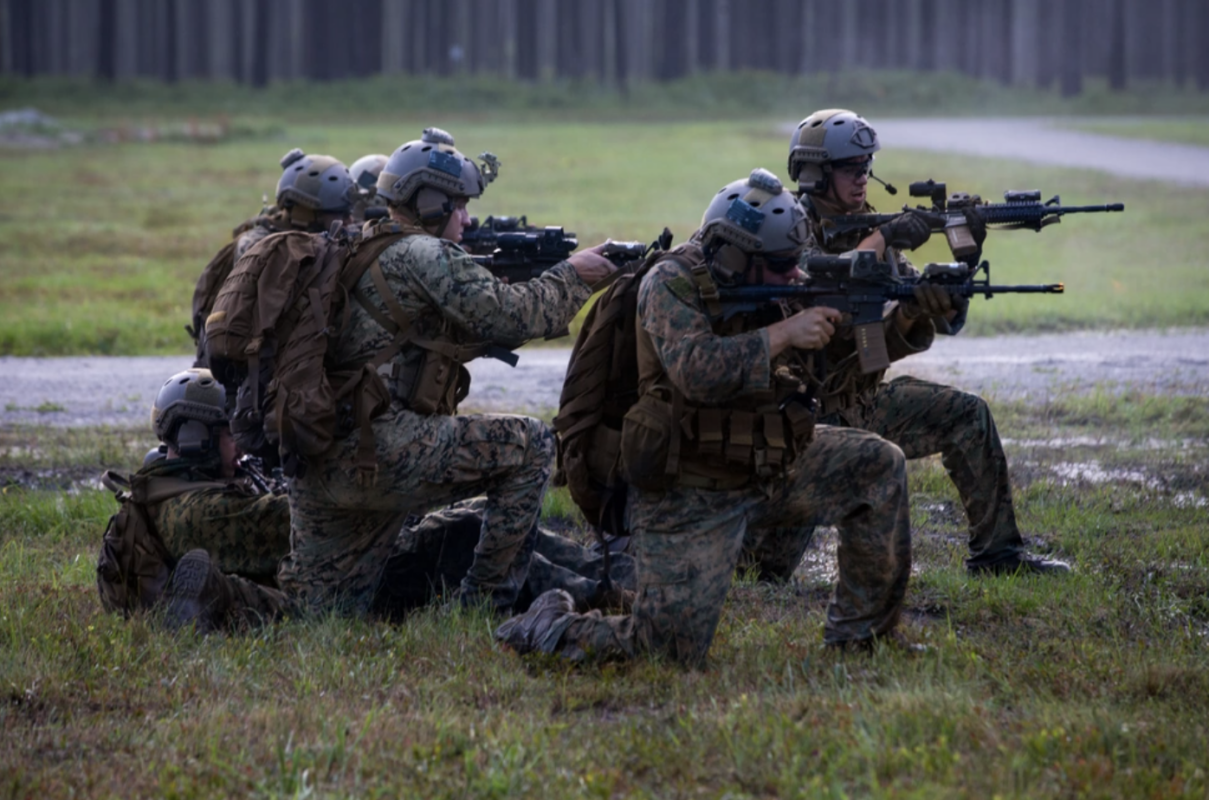
To meet those requirements, the chamber of a 5.56 NATO rifle is designed slightly larger for increased reliability. The slightly longer leade and shallow feed ramp angle enhance feeding and reliability by reducing the amount of carbon buildup and debris hanging out in the chamber.
The design concept is similar to that of the AK-47. Keep the tolerances a bit looser to get better reliability.
All that said, a common question arises regularly: Can you shoot 5.56 ammo out of a .223 rifle and vice versa?
Due to the increased pressure of a 5.56 cartridge and the slight difference in the chamber size, you should NEVER fire a 5.56 out of a .223. Doing so risks catastrophic damage to the shooter and rifle. You’d be shooting a higher-pressure round out of a smaller chamber.
However, you can safely shoot .223 ammunition out of a 5.56 rifle. The only issue you may experience is decreased accuracy due to the leade difference.
What’s the Difference in ballistics between .223 and 5.56
The three categories we’re going to look at are velocity, energy, and trajectory (drop) out to 500 yards.
In the Marine Corps, we were taught that the max effective range of our M16/M4 was 500 yards, so that’s why we’re using that as a reference.
The load we’re using in this example is the standard 55-grain FMJ.
| 5.56 Nato | 223 Remington | |
| Velocity (Muzzle) | 3,130 fps | 3,250 fps |
| Velocity (100 yards) | 2,740 fps | 2,849 fps |
| Velocity (200 yards) | 2,382 fps | 2,482 fps |
| Velocity (300 yards) | 2,051 fps | 2,144 fps |
| Velocity (400 yards) | 1,750 fps | 1,834 fps |
| Velocity (500 yards) | 1,484 fps | 1,557 fps |
| Energy (Muzzle) | 1,196 ft pounds | 1,290 ft pounds |
| Energy (100 yards) | 917 ft pounds | 991 ft pounds |
| Energy (200 yards) | 693 ft pounds | 753 ft pounds |
| Energy (300 yards) | 514 ft pounds | 561 ft pounds |
| Energy (400 yards) | 374 ft pounds | 411 ft pounds |
| Energy (500 yards) | 269 ft pounds | 296 ft pounds |
Velocity
Velocity is the most important of the three, as it affects the energy delivered to the target, as well as the rise and fall of the flight path.
As you can see, the 223 has a slightly higher velocity than the 5.56. This is mainly due to the chamber design and twist rate. The 223 Remington has a tighter chamber, resulting in increased accuracy compared to the 5.56 NATO.
Energy
Energy becomes important when discussing “hunting” and home defense. Energy can be translated to stopping power or energy on target. When the bullet impacts the target, it dumps all its energy into it.
The more foot-pounds of energy you can dump into the target, the better terminal results you’ll have.
As the chart above shows, the 223 Remington outpaces 5.56 NATO in terms of energy on target.
Trajectory
The trajectory or flight path of a bullet impacts the shooter’s ability to accurately hit the target. Knowing the trajectory of your ammunition will allow you to make the necessary adjustments to achieve accuracy. These adjustments will be different between the two cartridges.
The 5.56 NATO round has a roughly 3-inch drop at 200 yards and increases to an 11.25-inch drop at 300 yards.
The 223 Remington will drop roughly 4.2 inches at 200 yards. Although the 223 has a higher velocity, the 5.56 has less drop at distance, resulting in more consistent, combat-effective hits at longer ranges.
What is 223 Wylde?
When discussing .223 and 5.56, the 223 Wylde is commonly thrown into the mix. Why?
Well as we’ve discussed the difference between 223 and 556 and the consequences of firing a 5.56 out of a 223, what if we had a hybrid rifle or barrel that you could safely shoot both calibers from? Enter the 223 Wylde.
A rifle chambered in 223 Wylde gives you the ability to shoot both 223 Remington and 5.56 NATO ammunition out of the same rifle.
The design of the 223 Wylde barrel incorporates the 5.56 leade angle and chamber size, and the freebore concentricity of the 223 Remington.
By doing so, the 223 Wyle maintains the reliability of the 5.56 while giving you the accuracy of the .223 Remington.
What is the NATO designation of 5.56?
The NATO designation refers to ammunition designed to meet specific specifications for use by NATO forces.
If you placed a 223 Remington and a 5.56 NATO side by side, the only way you would be able to tell the difference is to look at the headstamp for the NATO designation.
Once you’ve identified it’s a NATO round, you know that it’s loaded to a higher pressure and cannot be fired out of a rifle chambered in 223 Remington.
Should I buy .223 or 5.56?
The short answer is to know what your rifle is chambered in and ensure you’re buying the correct ammunition.
If your rifle is chambered in .223 Remington, then that’s the ammo you need to buy. Likewise, if you’re rifle is chambered in 5.56 NATO, which most are, then ensure you’re buying 5.56 ammo.

If and when you need to replace your barrel, that’s a great time to consider getting a 223 Wylde barrel, allowing you to shoot both rounds from your rifle.
Conclusion
The 223 Remington and 5.56 NATO are two of the most popular rounds for the modern AR-15 era.
Although they have identical external dimensions and case capacity, the 5.56 is loaded to a higher pressure.
Due to the higher pressure, it is highly discouraged to fire 5.56 out of a rifle chambered for 223 Remington.
You can, however, safely fire a 223 round out of a rifle chambered for 5.56. The only potential negative impact you may notice is a decrease in accuracy.
If you don’t want to worry about which ammo to use in your AR-15, then you can either buy a rifle chambered in 223 Wylde or swap your existing barrel for a .223 Wylde barrel.
Once you’ve settled on what ammunition to use out of your rifle, buying that ammo in bulk is going to save you money in the long run.
